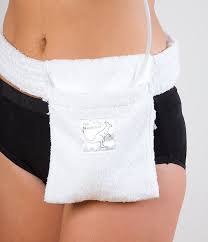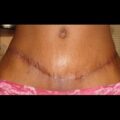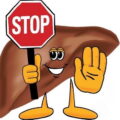A tummy tuck is a cosmetic surgical procedure to improve the appearance of the abdomen. According to Mayo Clinic, during a tummy tuck excess skin and fat is removed from the abdomen. Connective tissue in the abdomen (fascia) usually is tightened with sutures as well. The remaining skin is then repositioned to create a more toned look.
You might choose to have a tummy tuck if you have excess fat or skin around the area of your bellybutton or a weak lower abdominal wall. A tummy tuck can also boost your body image.
There are a number of reasons you might have excess fat, poor elasticity of the skin or weakened connective tissue in your abdomen. These include:
- Significant changes in weight
- Pregnancy
- Abdominal surgery, such as a C-section
- Aging
- Your natural body type
A tummy tuck can remove loose, excess skin and fat, and tighten weak fascia. A tummy tuck can also remove stretch marks and excess skin in the lower abdomen below the bellybutton. However, a tummy tuck won’t correct stretch marks outside of this area.
If you’ve previously had a C-section, your plastic surgeon might be able to incorporate your existing C-section scar into your tummy tuck scar.
A tummy tuck can also be done in combination with other body contouring cosmetic procedures, such as breast surgery. If you’ve had fat removed from your abdomen (liposuction), you may decide to have a tummy tuck because liposuction removes tissue just under the skin and fat but not any excess skin.
A tummy tuck isn’t for everyone. Your doctor might caution against a tummy tuck if you:
- Plan to lose a significant amount of weight
- Might consider future pregnancy
- Have a severe chronic condition, such as heart disease or diabetes
- Have a body mass index that’s greater than 30
- Are a smoker
- Had a previous abdominal surgery that caused significant scar tissue
How Long Does The Tightness Last After A Tummy Tuck?
After a tummy tuck, the feeling of tight skin after tummy tuck resolves within 6 –12 weeks for the majority of patients. However, in some cases, it may take longer to regain normal sensations as the nerves reestablish their connections and the tissues continue to heal and settle.
You’ll wear an abdominal binder for about six weeks. This helps to avoid fluid buildup and helps to support your abdomen. While the recovery period is usually shorter for a mini-tummy tuck, you’ll still need to avoid strenuous activity for at least six weeks. This includes any vigorous exercise or heavy lifting.
After a tummy tuck, an individual may need help caring for young children for several weeks to months. However, a person can typically return to activities, such as driving, within 1 to 2 weeks and gradually do more everyday tasks as time passes. A tummy tuck scar will likely feel sore or tight for several weeks to months following surgery. The visibility of the scar will slowly fade.
Recovery time after a tummy tuck can vary. Some common factors that impact this include:
- type of tummy tuck
- age
- postsurgery care
- general health
The results of a tummy tuck are considered permanent. Your abdominal wall will be more stable and strong. The excess skin that has been removed won’t return unless fluctuation in weight or a subsequent pregnancy stretches out the area again.
What are the risks associated with tummy tuck?
Tummy tucks have been shown to carry more complication risks than some other cosmetic procedures. In one study, 8.5 percent of people who had a tummy tuck needed to return to the hospital because of some kind of complication. Wound complications and infections were among the most common reasons for readmission.
Other possible risks include:
- Changes in sensation. Repositioning your abdominal tissue may affect the superficial sensory nerves in this area, as well as in your upper thighs. You may feel numbness in these areas.
- Fluid accumulation. As with liposuction, temporary pockets of fluid may form under the skin. Your doctor will need to drain these.
- Tissue necrosis. In some cases, fatty tissue deep within the abdominal area may get damaged. Tissue that doesn’t heal or dies must be removed by your surgeon.






